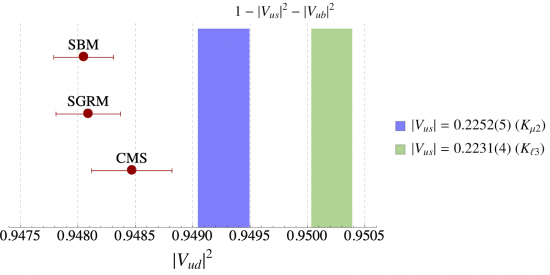Although not the main thrust of its research activities, the Theory Center provides support for experimental programs at Jefferson Lab that perform tests of fundamental symmetries of the Standard Model and searches for new physics beyond the Standard Model. Past experimental efforts have included high-precision determinations of the weak mixing angle, sin2θw, in the Qweak experiment in Hall C, and in the even higher precision future MOLLER experiment. In order to reliably infer possible deviations from Standard Model expectations, it is critical to have reliable calculations of various backgrounds. An important background that depends on nonperturbative QCD physics arises from the γ-Z boson box diagram, which has been shown to give important corrections to the Born level amplitudes, both in electron-proton scattering [1] and in Moller scattering [2].

A related effect arises from the γW interference radiative correction to neutron β-decay, which can be related within a dispersion approach to the isoscalar part of the F3γW interference structure function. Using the latest available phenomenology from the nucleon elastic, resonance, deep-inelastic, and Regge regions, a recent calculation [3] correction gives a theoretical estimate of the CKM matrix element |Vud|2 = 0.94805(26), which represents a 4σ violation of unitarity (see figure).
[1] N. L. Hall, P. G. Blunden, W. Melnitchouk, A. W. Thomas, and R. D. Young, Phys. Rev. D 88, 013011 (2013).
[2] N. L. Hall, P. G. Blunden, W. Melnitchouk, A. W. Thomas, and R. D. Young, Phys. Lett. B 731, 287 (2014).
[3] K. Shiells, P. G. Blunden, and W. Melnitchouk, arXiv:2012.01580.

